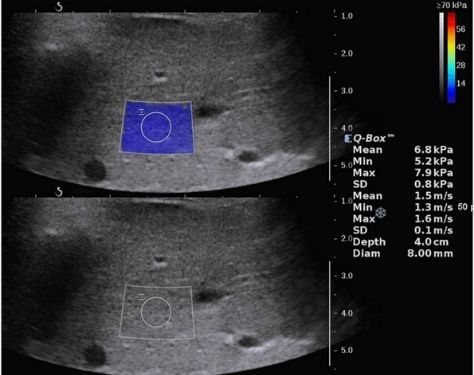[wonderplugin_slider id=3]

What is Elastography?
Elastography is a method in non-invasive medical imaging that helps assess the stiffness of your body’s organs and other structures. Most specifically, it is used to test the liver. Whether the tissue is hard or smooth, it finds out details about the condition of the disease.
Uses of Elastography
Elastography is used to scan the liver for illness. This technique is capable of Identifying and determining how serious the liver condition is.
It also helps in assessing the risk of liver disease symptoms, such as the buildup of fluids in the abdomen.
Preparations for Elastography
Special preparations for ultrasound elastography are not needed. But make sure that all metal jewelry and accessories are stripped before the exam.
Procedure of Elastography
On the surface of the tissue, an ultrasound (US) probe or MR driver is located. The probe or driver sends painless low-frequency signals to the organ under inspection via the body.
To build a graphic map showing the stiffness of the organ, a computer uses these details.
Risks of Elastography
When acceptable safety standards are followed, Elastography provides absolutely no risk to the average patient.
Consult
Dr. Manju Whig Singh, one of the best experts in fetal medicine of Greater Noida, can be consulted for Elastography.
Services
- Level 1 or NT/NB Scans, Level 2 Scans
- Transvaginal Ultrasound
- Baby Brain Ultrasound
- Neck, Eye, Joint Ultrasound
- 3D 4D Ultrasound
- Breast Ultrasound
- MammoGraphy
- Color Doppler
- KUB
- Follicular Monitoring
- ADD TVS Ultrasound
- Sonosalpingography
- Whole Abdomen Ultrasound
- Pelvis Ultrasound
- Growth Scans
- Foetal Echo Cardiography
- Obstetrics or Foetal Scans
- Ultrasound Guided Procedures
